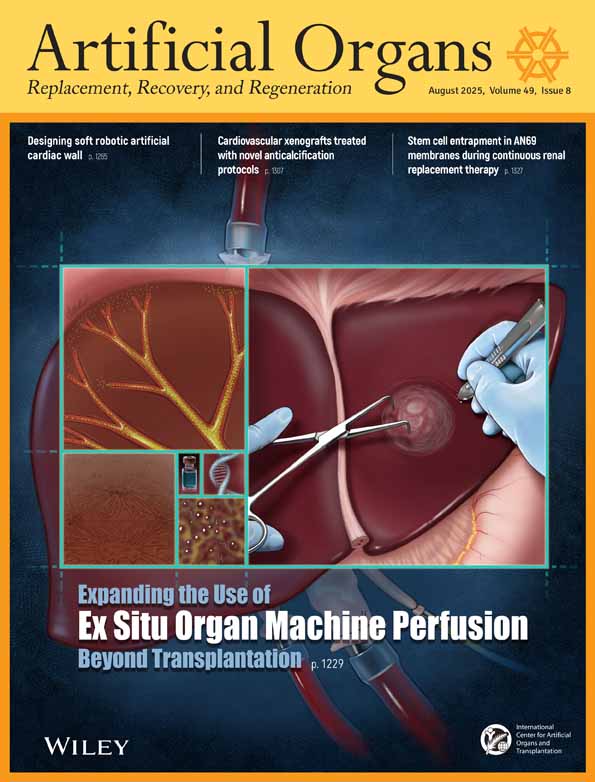Validation of a Model for Flow-Dependent Carbon Dioxide Exchange in Artificial Lungs
Abstract
Abstract: The exchange rate of CO2 in artificial lungs depends on the sweep gas flow rate. Control of the amount of CO2 removed by an artificial lung requires quantitative knowledge of the flow dependence. A simple model of the dependence of CO2 exchange on sweep gas flow rate in artificial lungs has been previously presented (1). For a given partial pressure of CO2 in the blood phase, sweep gas flow rate, and CO2 exchange rate, the model indicates how close the CO2 exchange rate is to the maximum level attainable by the artificial lung. The focus of this study was to validate the model experimentally by testing 2 commercial artificial lungs in an in vitro test loop. The CO2 exchange rate for each artificial lung was measured over a range of sweep gas flow rates. Linear regression was used to fit the data to the model and estimate the maximum possible CO2 exchange rate and the average water-side P co2 ( Pco2w). The difference between the measured and regressed values of Pco2w was used as an indicator of the ability of the model to quantitatively predict the dependence of CO2 exchange on gas flow rate. This difference was less than 5% for each experiment, indicating that the model can be used to guide control of CO2 exchange rates in artificial lungs.




